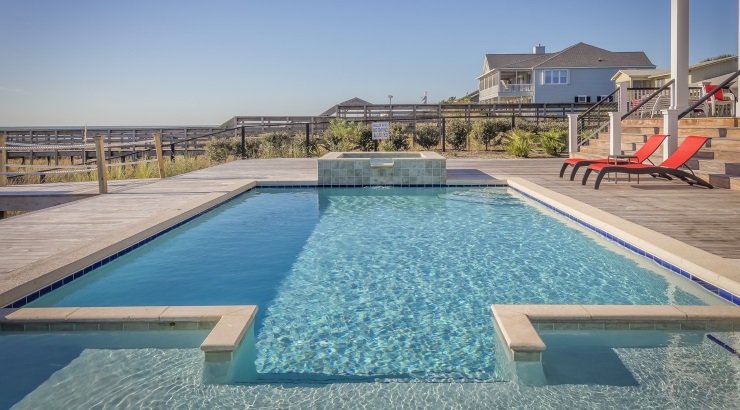Features
Swimming Pool Construction: Building Your Dream Oasis
Everything you need to know about swimming pool construction.

A swimming pool is a man-made water holding structure that is used for sports, leisure, or workouts. Swimming pools are mostly sunk into the ground, although they can be built above the ground or fitted as part of a building or structure such as a cruise ship.
Above-ground swimming pools are constructed from prefabricated kits. It is the easiest and least costly way to build them. However, such plants often come along with a range of potential problems concerning safety, since it is hard to view an incident going on in the pool from the surroundings.
Swimming pools are made in different sizes, shapes, and depths depending on their purposes. Private pools – constructed at private homes – have sizes from 3.7m x 7.3m to 6.1m x 12.2m on average.
On the other side, many public pools are linear with dimensions 25-50 metres in length, while competition swimming pools have dimensions 25-50 metres in terms of length, a minimum depth of 1.35 metres, and a minimum of 8 lanes wide.
There are three main types of pools: fiberglass, concrete, and vinyl liner, the main difference between them being the method of construction for the ‘swimming pool basin.’
1. Fibreglass swimming pools
Fiberglass swimming pools are “built” in two stages: manufacturing and installation. At the manufacturing stage, fiberglass-reinforced plastic is moulded off-site into a basin shape to fit the required specifications.
Once this is done, a hole is dug at the site and a base material is placed at the bottom of the pit for the swimming pool to sit on. The pool is then transported to the site in one piece.
After the necessary plumbing installation, the swimming pool is lowered into the pit with a crane or similar equipment. Backfilling is done around the pool and in most cases, a concrete deck is built around the perimeter.
2. Vinyl-lined swimming pools
Construction of vinyl-lined swimming pools starts with the excavation of a hole at the desired location of the pool. A metal, plastic or timber frame wall is then made around the perimeter, after which sand filler is placed at the bottom of the hole, and a vinyl lining is secured to the perimeter wall.
These thin vinyl-lining (usually about the width of ten sheets of paper) are used to hold the pool water in the structure of the swimming pool.
RELATED: Most Popular Types of Concrete Floor Finishes
Vinyl-lined pools tend to be cheaper compared to other in-ground swimming pool types but are less durable because the pliable liner requires replacement every ten years or so.
3. Gunite swimming pools
Most gunite pools start as an excavation for a hole. The hole is dug out, the plumbing laid, and the workers construct the framework grid with steel reinforcing rods, commonly called rebar.
The reinforcing rods are spaced about 10 inches apart and then wrapped in place by cable. A grid is installed, and then workers hose down an inch-and-a-half-deep coat of gunite (a mix of cement and sand) that envelops the rebar.
The spraying machine combines dry gunite mix with water just before squirting to produce wet concrete material. This is spread evenly and left to cure for a week or two before the pool is finished with plaster, special concrete paint or pebble surfaces.
4. Concrete swimming pools
These are quite similar to gunite pools, the only difference being that instead of spraying gunite, concrete is emptied into conventional timber formwork.
After the excavation of the hole, steel rods are fastened into place. Concrete is then emptied or shot into place, forming the pool shell. Once the tile and coping works are completed, the plaster finish is spread across the surface of the pool shell.














